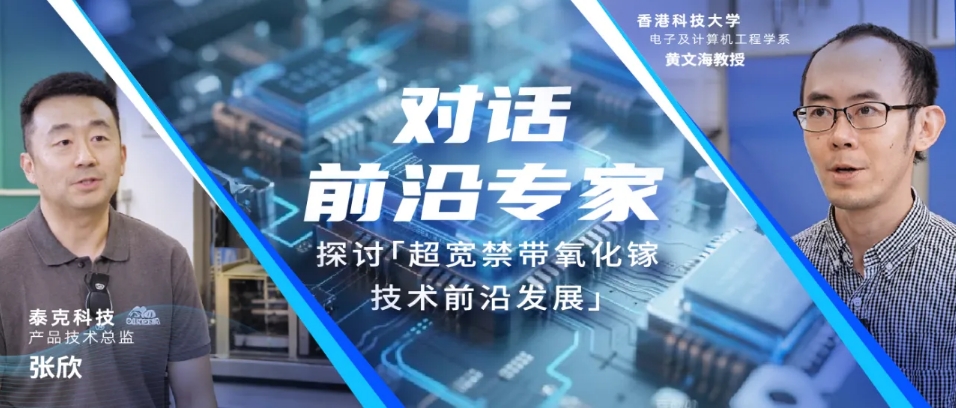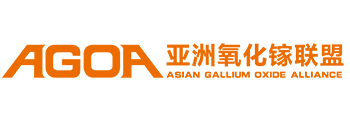

【Expert Interview】Professor Huang Wenhai from the Hong Kong University of Science and Technology Discusses the Breakthroughs and Prospects of Gallium Oxide Devices
日期:2025-06-05阅读:961
In the field of ultra-wide band gap semiconductors, Gallium Oxide devices have become a research hotspot due to their unique properties. We were fortunate to have an in-depth exchange with Professor Huang Wenhai, a professor of Electronic and Computer Engineering at the Hong Kong University of Science and Technology, on the current research status, application prospects and test and measurement challenges of Gallium Oxide devices.
The Hong Kong University of Science and Technology has achieved remarkable results in the field of Gallium Oxide research, covering multiple aspects such as material growth, device design, performance optimization and application development. Through cooperation with international research institutions and enterprises, the team from the Hong Kong University of Science and Technology has not only promoted the development of Gallium Oxide technology but also provided important technical support for applications in related fields.
Professor Huang Wenhai's team mainly focuses on the research of the entire chain of Gallium Oxide devices. In terms of material growth, the focus was on optimizing the crystal growth process. By improving the melt growth technology, the quality of Gallium Oxide crystals was successfully enhanced, and the density of crystal defect was reduced, providing a high-quality material foundation for the preparation of high-performance devices. In terms of device design and fabrication, Professor Huang's team has innovatively designed a variety of new device structures, such as a vertical transistor structure based on field plate optimization, which has effectively improved the breakdown voltage and conduction performance of the devices, and some of the device performance indicators have reached international advanced levels. These achievements have laid a solid foundation for the promotion of Gallium Oxide devices in high-power, high-voltage and other application scenarios.

The Evolution and Key Technological Breakthroughs of Gallium Oxide Devices
Zhang Xin: In the development process of Gallium Oxide devices, which key technological breakthroughs do you think will support them move from theory to practical application? How exactly do these breakthroughs enhance the performance of Gallium Oxide devices?
Professor Huang Wenhai: The development of Gallium Oxide devices is indeed inseparable from breakthroughs in some key technologies. First of all, high-quality material growth technology is the foundation. Through techniques such as molecular beam epitaxy (MBE), we can grow high-quality Gallium Oxide films, which is crucial for the performance of devices. Secondly, the optimization of the device structure design is also crucial. For example, by introducing Field Plate, we have effectively enhanced the withstand voltage capacity of the device. In addition, the electric field management techniques for the device, such as the application of high k dielectric, have significantly improved the electrical performance of the device.
Zhang Xin: In recent years, Gallium Oxide devices have been continuously evolving in terms of materials and structures. Could you please share the latest developments in these areas?
Professor Huang Wenhai: In terms of materials, we are exploring new types of Gallium Oxide materials, which have higher withstand voltage capacity and lower leakage rate. In terms of structural design, we are committed to developing more efficient vertical structures to achieve higher power density and better heat dissipation performance. These research directions all aim to further enhance the performance of Gallium Oxide devices to meet the demands of various application scenarios.
Application Prospects of Gallium Oxide Devices
Zhang Xin: Among various application fields, in your opinion, in which aspects do Gallium Oxide devices have the greatest development potential in the future? What are the reasons?
Professor Huang Wenhai: I believe that Gallium Oxide devices have great potential for development in fields such as power electronics, ultraviolet detection, and sensors. In the field of power electronics, the high withstand voltage and low power consumption characteristics of Gallium Oxide devices make them ideal power conversion devices, which can significantly improve the efficiency and reliability of power systems. In terms of ultraviolet detection, the wide bandgap characteristic of Gallium Oxide materials makes them highly sensitive to ultraviolet light, and they are expected to play an important role in fields such as environmental monitoring and biomedical imaging.
Zhang Xin: What challenges do Gallium Oxide devices still face in the application of emerging fields at present? How can academia and industry work together?
Professor Huang Wenhai: Currently, the stability of Gallium Oxide devices in high-frequency and high-power applications still needs to be further improved. The academic community should focus on fundamental research and explore new materials and new structures; The industry should focus on device manufacturing and application development, translating research results into actual products. Through this kind of collaborative cooperation, the commercialization process of Gallium Oxide devices can be accelerated and the development of related technologies can be promoted.
Test and Measurement Challenges and Responses
Zhang Xin: In the testing and measurement process of Gallium Oxide devices, what prominent difficulties and pain points have you encountered?
Professor Huang Wenhai: The special electrical and optical properties of Gallium Oxide devices have brought many technical challenges to testing and measurement. For instance, due to the high withstand voltage characteristics of Gallium Oxide devices, high-precision and highly stable testing equipment is required when measuring their electrical parameters. In addition, for the measurement of the optical properties of the device, such as ultraviolet emission and absorption, specialized spectral analysis equipment is also required.
Zhang Xin: How have these testing difficulties affected the research and development, production and quality control of Gallium Oxide devices? How do you deal with these challenges in your actual work?
Professor Huang Wenhai: These testing difficulties have had a significant impact on the research and development, production, and quality control of Gallium Oxide devices. To address these challenges, we have adopted a variety of advanced measurement methods, such as scanning electron microscopy (SEM), transmission electron microscopy (TEM), and X-ray photoelectron spectroscopy (XPS), to comprehensively characterize the performance of Gallium Oxide devices. At the same time, we also used Tektronix/Keithley's test measurement solutions, the high precision and stability of which are crucial to our research.
Future Outlook: The Development Direction of Gallium Oxide devices
Zhang Xin: Could you please make a forward-looking prediction on the development direction of Gallium Oxide devices in the next 5 to 10 years? In this process, what key technological innovations do you think will emerge?
Professor Huang Wenhai: In the next 5 to 10 years, Gallium Oxide devices will achieve breakthroughs in applications with higher voltages, higher frequencies, and higher powers. These applications will drive innovations in power electronics technology and bring new development opportunities to areas such as renewable energy, electric vehicles and smart grids. Meanwhile, I believe that the development of new device structures, the improvement of material quality and the optimization of manufacturing processes will be the key technological innovation points for the future. I believe that through continuous technological innovation and cooperation, Gallium Oxide devices will achieve breakthroughs in more fields and inject new vitality into the development of the global semiconductor industry.


